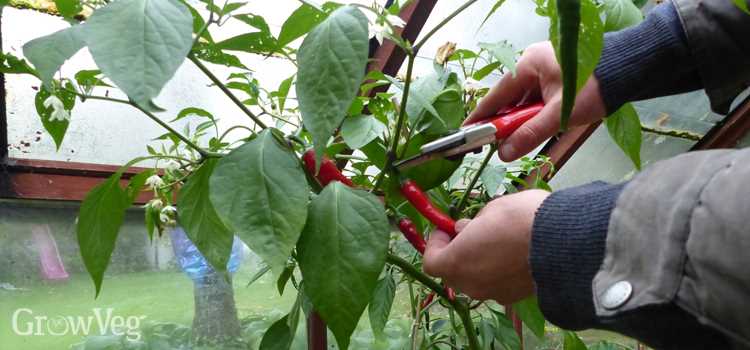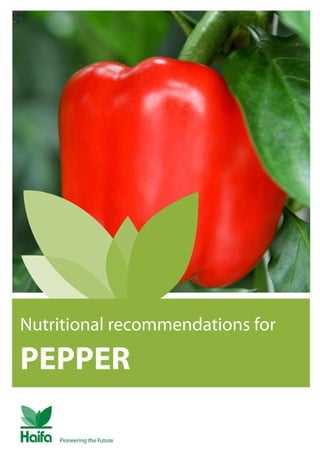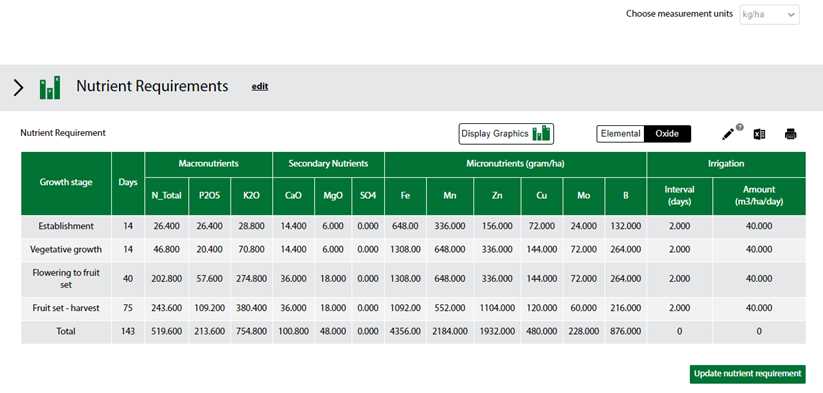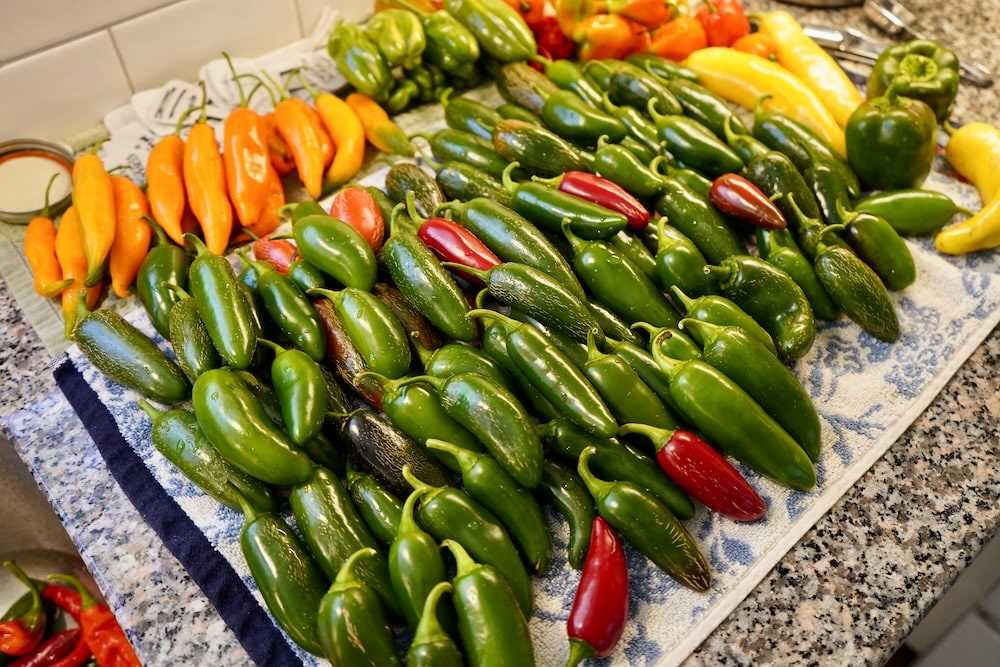- The Importance of Fertilisation for Pepper Plants
- Nutrients Required by Pepper Plants
- The Role of Fertilisers
- Fertilisation Practices for Pepper Plants
- Different Types of Fertilisers
- 1. Organic Fertilisers
- 2. Chemical Fertilisers
- 3. Slow-Release Fertilisers
- 4. Liquid Fertilisers
- 5. Balanced Fertilisers
- 6. Specialty Fertilisers
- 7. Controlled-Release Fertilisers
- 8. Foliar Fertilisers
- April Fertiliser Requirements for Pepper Plants
- Soil Nutrient Analysis
- Nitrogen Content
- Phosphorus and Potassium Content
- Micronutrients
- Slow-release Fertilisers
- Organic Fertilisers
- Application Rate
- Fertiliser Timing
- Fertiliser A: Composition and Benefits
- Composition
- Benefits
- Fertiliser B: Composition and Benefits
- Composition
- Benefits
- Comparison of Fertilisers A and B
- Fertiliser A
- Fertiliser B
- Conclusion
- “Question-Answer”
- What types of fertilizers are recommended for pepper plants in April?
- What is the difference between slow-release fertilizers and liquid fertilizers?
- Which type of fertilizer is easier to use: slow-release or liquid fertilizers?
- Are slow-release fertilizers more effective than liquid fertilizers in terms of nutrient absorption?
- Is there a specific brand of slow-release fertilizer that is recommended for pepper plants?
- Can liquid fertilizers be used in conjunction with slow-release fertilizers?
- “Video” Testing 5 Different Fertilizers For Growing Peppers – Pepper Geek
Growing peppers can be a rewarding and delicious experience, but it requires careful attention to their nutritional needs. One crucial aspect of pepper cultivation is selecting the right fertiliser to promote healthy growth and maximize crop yield. In this article, we will compare two essential fertiliser preparations for peppers available in April, aiming to help pepper growers make informed decisions based on the specific needs of their plants.
Firstly, let’s explore the characteristics and benefits of the traditional organic fertiliser. Organic fertilisers are derived from natural sources and are prized for their environmentally-friendly qualities. They enrich the soil with vital nutrients, such as nitrogen, phosphorus, and potassium, which are necessary for the overall development of pepper plants. Additionally, organic fertilisers improve soil structure, water retention, and microbial activity, creating a conducive growing environment for peppers.
On the other hand, synthetic fertilisers offer their own unique advantages. Designed to provide a quick and precise nutrient boost, synthetic fertilisers are formulated with specific ratios of essential nutrients. These fertilisers ensure that plants receive the exact amount of nutrients needed for optimal growth. Additionally, synthetic fertilisers are readily available and easy to use, making them a convenient choice for gardeners with limited time or resources.
As with any gardening decision, the choice of fertiliser for peppers depends on various factors, such as soil composition, existing nutrient levels, and personal preferences. It is essential to consider the specific needs of the pepper plants and how the selected fertiliser will meet those needs. By understanding the benefits and limitations of both organic and synthetic fertilisers, gardeners can make an informed decision and provide their pepper plants with the necessary nutrients for a successful growing season.
The Importance of Fertilisation for Pepper Plants
Proper fertilisation is crucial for the healthy growth and development of pepper plants. Lack of nutrients in the soil can result in stunted growth, lower yields, and increased susceptibility to diseases and pests. By providing the necessary nutrients, fertilisers can help ensure that pepper plants receive the nutrition they need to thrive.
Nutrients Required by Pepper Plants
Pepper plants require several key nutrients to support their growth and productivity. These include:
- Nitrogen: Nitrogen is essential for promoting vigorous plant growth and the development of lush, green foliage. It plays a crucial role in the production of proteins, enzymes, and chlorophyll.
- Phosphorus: Phosphorus aids in root development, flowering, and fruiting. It is necessary for energy transfer and the synthesis of DNA and RNA.
- Potassium: Potassium contributes to overall plant health, disease resistance, and the regulation of water uptake and distribution.
- Calcium: Calcium is important for cell wall development and strengthening. It helps prevent disorders such as blossom-end rot.
- Magnesium: Magnesium is a component of chlorophyll and is crucial for photosynthesis. It also plays a key role in enzyme activation.
The Role of Fertilisers
Fertilisers provide these essential nutrients in a form that is readily available to pepper plants. They can be divided into two main types: organic and synthetic fertilisers.
- Organic Fertilisers: Organic fertilisers are derived from natural sources, such as compost, manure, or bone meal. They release nutrients slowly over time and improve soil health by enhancing its structure and water-holding capacity.
- Synthetic Fertilisers: Synthetic fertilisers are manufactured products that contain specific ratios of nutrients. They provide nutrients in a readily available form that can be quickly absorbed by plants.
Fertilisation Practices for Pepper Plants

When fertilising pepper plants, it is important to follow recommended practices to ensure optimal results:
- Test the soil: Before applying fertilisers, it is advisable to test the soil to determine its nutrient levels. This will help in selecting the appropriate fertiliser and adjusting application rates.
- Timing: Fertilisers should be applied at the right time to meet the plant’s nutritional needs during different growth stages. Pre-planting or side-dressing applications are common practices.
- Application rates: It is important to apply fertilisers at the recommended rates to avoid nutrient deficiencies or excesses, which can be harmful to the plants.
- Watering: After applying fertilisers, adequate watering is necessary to help dissolve and distribute the nutrients in the soil, ensuring their availability to the plants.
By understanding the importance of fertilisation and following proper fertilisation practices, pepper plant growers can promote healthy growth, improve yields, and increase the overall quality of their crops.
Different Types of Fertilisers
When it comes to fertilising your peppers, there are several different types of fertilisers to choose from. Each type has its own specific benefits and uses. Here are some of the most common types:
1. Organic Fertilisers
Organic fertilisers are made from natural materials, such as compost, manure, and bone meal. These fertilisers are rich in nutrients and help to improve the soil structure and fertility. They release nutrients slowly over time, providing a steady supply of nourishment to the peppers.
2. Chemical Fertilisers

Chemical fertilisers are synthetic or manufactured fertilisers that contain specific ratios of nitrogen, phosphorus, and potassium (NPK). They can deliver nutrients rapidly to the plants and can be formulated to meet the specific needs of the peppers at different stages of growth.
3. Slow-Release Fertilisers
Slow-release fertilisers contain nutrients that are released slowly over an extended period of time. These fertilisers are ideal for peppers as they provide a continuous supply of nutrients without the need for frequent applications.
4. Liquid Fertilisers
Liquid fertilisers are concentrated nutrients that are dissolved in water and applied to the peppers through irrigation. They are quickly absorbed by the roots and provide an immediate boost of nutrients.
5. Balanced Fertilisers

Balanced fertilisers contain equal proportions of nitrogen, phosphorus, and potassium (NPK). These fertilisers are suitable for peppers as they provide a balanced supply of nutrients to support overall plant growth and development.
6. Specialty Fertilisers
Specialty fertilisers are formulated to meet the specific nutritional needs of certain plants or conditions. For peppers, specialty fertilisers may include additional micronutrients or additives to promote flowering, fruit development, or disease resistance.
7. Controlled-Release Fertilisers
Controlled-release fertilisers are coated with a substance that controls the release of nutrients. These fertilisers can last for months and are ideal for peppers as they provide a slow and steady supply of nutrients throughout the growing season.
8. Foliar Fertilisers

Foliar fertilisers are applied directly to the leaves of the peppers. They are quickly absorbed by the plant and provide an immediate source of nutrients. Foliar fertilisers are often used as a supplement to root-applied fertilisers.
Each type of fertiliser has its own advantages and disadvantages, so it’s important to consider the specific needs of your peppers and the characteristics of each type before choosing the right fertiliser for your plants.
April Fertiliser Requirements for Pepper Plants
As April arrives, it is crucial to determine the right fertiliser requirements for your pepper plants. Proper fertilisation plays a vital role in achieving healthy growth, strong root development, and increased fruit production. Here are some essential factors to consider when choosing the right fertiliser for your pepper plants:
Soil Nutrient Analysis
Before applying any fertiliser, it is recommended to conduct a soil nutrient analysis. This analysis will help determine the specific nutrient deficiencies in your soil and guide your fertiliser selection. A professional soil test can provide accurate information on the levels of nitrogen, phosphorus, potassium, and other essential nutrients present in the soil.
Nitrogen Content

Pepper plants require a sufficient amount of nitrogen, especially during their early growth stages. Nitrogen aids in the development of healthy foliage and promotes overall plant growth. When selecting a fertiliser, consider one with a higher nitrogen content.
Phosphorus and Potassium Content
Phosphorus is essential for root development and the formation of strong stems and branches. Potassium contributes to overall plant strength, disease resistance, and improved fruit quality. Look for a fertiliser with adequate phosphorus and potassium content to meet the needs of your pepper plants.
Micronutrients
Aside from the primary nutrients mentioned above, pepper plants also require various micronutrients, such as calcium, magnesium, iron, zinc, and manganese. These micronutrients are essential for optimal plant growth and fruit development. Consider a fertiliser that includes these micronutrients in balanced amounts.
Slow-release Fertilisers
Using slow-release fertilisers can provide a continuous supply of nutrients to your pepper plants. These types of fertilisers release nutrients gradually over an extended period, reducing the risk of over- or under-fertilisation. Slow-release fertilisers are particularly beneficial for container-grown peppers.
Organic Fertilisers
For those who prefer organic gardening methods, there are various organic fertilisers available that can meet the nutrient requirements of pepper plants. Organic fertilisers tend to be slower in releasing nutrients but contribute to improving soil health and fertility over time.
Application Rate
When applying fertilisers, always follow the manufacturer’s instructions for the recommended application rate. Applying too much fertiliser can lead to nutrient imbalances or fertilizer burn, while applying too little may result in nutrient deficiencies. It is crucial to strike a balance and monitor your plants’ response to fertilisation.
Fertiliser Timing
The timing of fertiliser application is crucial for optimal plant growth. In April, when pepper plants are actively growing, it is best to apply fertiliser early in the month to provide the nutrients necessary for healthy development in spring.
In conclusion, selecting the right fertiliser for your pepper plants in April involves considering soil nutrient analysis, nitrogen content, phosphorus and potassium content, micronutrients, slow-release fertilisers, organic options, application rate, and proper timing. By providing the necessary nutrients, you can ensure healthy growth and bountiful harvests from your pepper plants.
Fertiliser A: Composition and Benefits
Fertiliser A is a specially formulated preparation designed to provide essential nutrients for the optimal growth and development of pepper plants. It is composed of a balanced combination of macronutrients, micronutrients, and other beneficial elements that ensure the plants receive all the necessary components for healthy growth.
Composition
The main ingredients of Fertiliser A include:
- Nitrogen (N): Nitrogen is vital for vegetative growth and helps in the production of chlorophyll, which is essential for photosynthesis.
- Phosphorus (P): Phosphorus aids in root development, flower formation, and fruiting. It is especially important during the early stages of plant growth.
- Potassium (K): Potassium promotes overall plant health, enhances resistance to diseases and pests, and improves fruit quality.
- Calcium (Ca): Calcium contributes to cell wall strength, proper nutrient uptake, and helps prevent disorders like blossom end rot.
- Magnesium (Mg): Magnesium is an essential component of chlorophyll and plays a vital role in photosynthesis.
- Sulfur (S): Sulfur is necessary for protein synthesis and enzyme activation, helping to enhance the plant’s overall vitality.
- Micronutrients: Fertiliser A also contains essential micronutrients like iron, zinc, manganese, copper, molybdenum, and boron, which are necessary for various physiological processes within the plant.
Benefits

Using Fertiliser A offers numerous benefits for pepper plants, including:
- Promotes healthy growth: The balanced composition of macronutrients and micronutrients ensures that the plants receive all the necessary elements for robust growth and development.
- Increases yield: The proper supply of essential nutrients helps in maximizing the yield of pepper plants, resulting in a higher quantity of healthy and flavorful fruits.
- Improves disease resistance: The presence of potassium and other essential elements strengthens the overall immune system of the plants, making them more resistant to diseases and pests.
- Enhances fruit quality: Fertiliser A aids in the production of nutritious and high-quality peppers by improving flavor, color, and texture.
- Prevents nutrient deficiencies: Regular use of Fertiliser A prevents nutrient deficiencies, which can lead to stunted growth, poor fruit development, and other plant disorders.
In summary, Fertiliser A is a well-rounded preparation that provides the necessary nutrients for optimal pepper growth and development. Its balanced composition and numerous benefits make it an ideal choice for pepper growers looking to achieve healthy plants and a bountiful harvest.
Fertiliser B: Composition and Benefits
Fertiliser B is a specially formulated fertiliser designed for promoting healthy growth and development of peppers. It contains a balanced blend of essential nutrients that are necessary for the optimal growth of the pepper plants.
Composition
Fertiliser B consists of the following key ingredients:
- Nitrogen: Nitrogen is an essential nutrient for promoting leafy green growth. It helps in the synthesis of proteins and enzymes, which are important for plant structure and function.
- Phosphorus: Phosphorus is crucial for root development and overall plant health. It plays a vital role in energy transfer and storage, as well as DNA synthesis.
- Potassium: Potassium is involved in the regulation of water and nutrient movement within the plant. It also aids in the development of strong stems and improves disease resistance.
- Calcium: Calcium is essential for cell wall development and strength. It helps in preventing diseases related to fruit rot and blossom end rot.
- Magnesium: Magnesium is a vital component of chlorophyll, the pigment responsible for photosynthesis. It enhances the overall energy production of plants.
- Trace elements: Fertiliser B also contains a range of trace elements such as iron, manganese, zinc, and copper, which are required for the proper functioning of various enzymes and metabolic processes.
Benefits
The unique composition of Fertiliser B offers several benefits for pepper plants:
- Promotes healthy growth: The balanced blend of nutrients in Fertiliser B ensures that the pepper plants receive all the necessary elements for their optimal growth and development.
- Enhances fruit yield: The presence of phosphorus, potassium, and calcium in the fertiliser helps in improving fruit quality, size, and yield.
- Improves disease resistance: The inclusion of trace elements like zinc and copper enhances the plant’s immune system, making it more resistant to diseases and pests.
- Increases nutrient uptake: Fertiliser B contains nitrogen, which improves nutrient absorption by the roots, resulting in better overall nutrient uptake by the plant.
- Prevents nutrient deficiencies: The presence of magnesium and other trace elements in Fertiliser B helps in preventing nutrient deficiencies, which can lead to stunted growth and poor fruit production.
Overall, Fertiliser B is an excellent choice for providing the necessary nutrients to pepper plants, ensuring their healthy growth, optimal fruit development, and increased disease resistance.
Comparison of Fertilisers A and B
When it comes to fertilising peppers, it is important to choose the right product that will provide the necessary nutrients for healthy growth and abundant harvest. In this comparison, we will evaluate Fertilisers A and B to help you make an informed decision.
Fertiliser A
- Nutrient Composition: Fertiliser A is formulated with a balanced blend of nitrogen, phosphorous, and potassium (NPK). It also contains essential micro-nutrients such as iron, manganese, and zinc.
- Application: This fertiliser is designed for both soil application and foliar feeding. It can be applied directly to the soil around the base of the plants or as a spray on the leaves.
- Benefits: Fertiliser A promotes vigorous growth and enhances the overall health of pepper plants. It improves root development, increases fruit set, and enhances the plants’ ability to resist diseases and stress.
- Drawbacks: Some users have reported that Fertiliser A can be expensive compared to other options on the market. Additionally, it may require frequent applications to maintain optimal nutrient levels.
Fertiliser B
- Nutrient Composition: Fertiliser B is specifically formulated for pepper plants, with a higher concentration of potassium compared to nitrogen and phosphorous. It also contains beneficial microorganisms that improve soil fertility.
- Application: This fertiliser is intended for soil application only. It should be evenly distributed around the base of the plants and watered in thoroughly.
- Benefits: Fertiliser B provides essential nutrients that support fruit development and enhance the flavor and nutritional quality of peppers. It also improves soil structure, water retention, and nutrient availability.
- Drawbacks: Some users have found that Fertiliser B may not be suitable for all soil types and climates. It may also take longer to see noticeable results compared to other fertilisers.
Conclusion
| Fertiliser A | Fertiliser B | |
|---|---|---|
| Nutrient Composition | Balanced blend of NPK and essential micro-nutrients | Higher potassium concentration and beneficial microorganisms |
| Application | Soil and foliar | Soil only |
| Benefits | Vigorous growth, increased fruit set, disease resistance | Improved fruit quality, enhanced soil fertility |
| Drawbacks | Costly, may require frequent applications | May not work with all soil types, longer waiting time for results |
Ultimately, the choice between Fertilisers A and B depends on your specific needs and preferences. Consider factors such as nutrient composition, application methods, and potential drawbacks to determine which fertiliser is the best fit for your pepper plants.
“Question-Answer”
What types of fertilizers are recommended for pepper plants in April?
There are two essential fertilizers that are recommended for pepper plants in April: slow-release fertilizers and liquid fertilizers.
What is the difference between slow-release fertilizers and liquid fertilizers?
The main difference between slow-release fertilizers and liquid fertilizers is the way they are applied to the plants. Slow-release fertilizers are granules that are applied to the soil and release nutrients slowly over time, while liquid fertilizers are mixed with water and applied to the plants through foliar feeding or root drenching.
Which type of fertilizer is easier to use: slow-release or liquid fertilizers?
Liquid fertilizers are easier to use compared to slow-release fertilizers. They can be easily mixed with water and applied directly to the plants, while slow-release fertilizers need to be spread evenly on the soil and require more careful application.
Are slow-release fertilizers more effective than liquid fertilizers in terms of nutrient absorption?
Slow-release fertilizers are generally more effective than liquid fertilizers in terms of nutrient absorption. This is because they release nutrients slowly over time, allowing the plants to absorb them gradually. Liquid fertilizers, on the other hand, can be absorbed more quickly but may not provide a long-lasting nutrient supply.
Is there a specific brand of slow-release fertilizer that is recommended for pepper plants?
There are several brands of slow-release fertilizers that are recommended for pepper plants, including Osmocote and Jobe’s Organics. It is important to choose a slow-release fertilizer that is specifically formulated for vegetable plants and follow the instructions on the package for application rates.
Can liquid fertilizers be used in conjunction with slow-release fertilizers?
Yes, liquid fertilizers can be used in conjunction with slow-release fertilizers. This can help provide an immediate nutrient boost to the plants while the slow-release fertilizers continue to release nutrients over time. It is important to follow the instructions on both the slow-release fertilizer and the liquid fertilizer for proper application rates.







